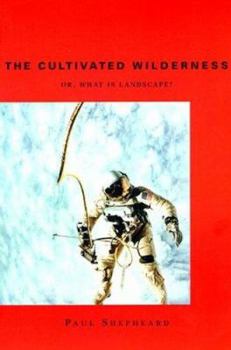The Cultivated Wilderness: Or, What Is Landscape?
Select Format
Select Condition 
Book Overview
Paul Shepheard's previous book, What is Architecture?, was about making real, material things in the world--landscapes, buildings, and machines. The Cultivated Wilderness is about those landscapes,... This description may be from another edition of this product.
Format:Paperback
Language:English
ISBN:0262691949
ISBN13:9780262691949
Release Date:February 1997
Publisher:MIT Press
Length:252 Pages
Weight:0.96 lbs.
Dimensions:0.6" x 5.5" x 8.4"
Age Range:18 years and up
Grade Range:Postsecondary and higher
Customer Reviews
1 rating
among the most exciting books on the subject I have read
Published by Thriftbooks.com User , 26 years ago
Shepheard's book is among the most exciting I have read in a very long time--even though I still don't quite know what it is. Is it what, as a university press publication, one might suppose it to be, a work of "scholarship"? is it instead, as, having read it, I now almost think, a very nearly poetic meditation on the interactions between human beings and their environment? I can say neither with certainty. What it is, "certainly," is a set of essays that consider, among other things, what "wilderness" might mean to the human beings who interact with, live in, or stamp their presence over it; the seven wonders of the ancient world; the human presence in Antactica; Scotland; Flevoland and the Dutch polders; the relationship between London and its surroundings; and--in its last chapter--the western front. Each essay is characterized first and foremost by the author's idiosyncratic and playful voice. He writes like a cranky and opinionated human being speaking to other human beings, not like an academic ghost-in-the-book-as-machine addressing some equally dessicated conception of an academic reader. The essays are shot through with conversations (invented? recorded?), little dramas, vignettes, and a basketful of other irrelevancies--although they never turn out to be as irrelevant as you suppose. Each is also characterized by flashes of insight that strike you like lightbulbs going off at unpredictable intervals, page after page. Many years ago, an English professor named Robert Stevick wrote an essay attempting to define the "form" of a genre called "the anatomy." It had, back then, recently been made "famous" all over again by a Canadian name of Frye. Stevick's examples, as I recall, included not only melancholick Burton, more or less obviously, but also Swift's Tale of a Tub, Tristram Shandy, Sartor Resartus, Moby Dick, A la recherche du temps perdus, and Ulysses. At an MLA meeting in the late 1970s, I proposed that Anthony Powell's Dance to the Music of Time would be better understood in reference to this genre than if it were read (as it usually is) against the standards of realistic fiction; I still believe this argument is worth making in a more formal way than I did then, as an aside in a different argument, or here, as an assertion. Whatever else it may be, Shepheard's Cultivated Wilderness is the most recent major contribution to the anatomy genre I have come across. I also think it is simply brilliant. My pleasure in the book sent me looking, the day I finished it, for Shepheard's first book, What is Architecture? An Essay on Landscapes, Buildings, and Machines (MIT Press, 1994; paperback $9.95). I took me twenty-four hours to find a copy, which proved a bit frustrating. When I finally got my mitts on it, this earlier book also won me over. Art is everywhere [Shepheard writes]. As life has become detached from the wilderness, the human world is everywhere. I see music as a throbbing accompaniment to every moment of





